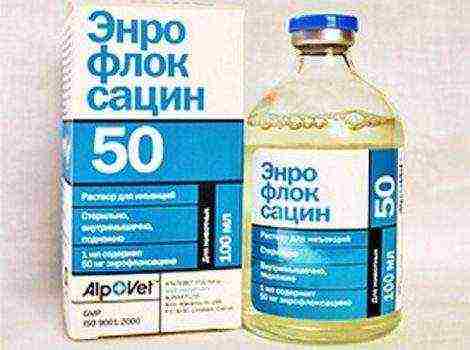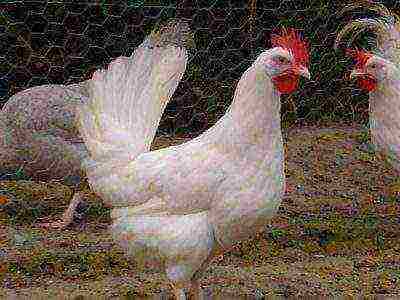Content
- 1 Instructions for the use of metronidazole for birds
Instructions for the use of metronidazole for birds
One of the most common problems in poultry farming is invasive diseaseswhich are called parasites that enter the bird's body through contaminated bedding or feed... Without proper treatment, they can cause very large economic damage, both to private farmsteads and farms. One of the means to combat this ailment is metronidazole, with instructions for the use of which can be found below.
For what diseases is metronidazole used?
Metronidazole is an antiparasitic drug with a pronounced antibacterial effect. It is effective against most protozoan parasites and anaerobic microorganisms. In the poultry industry, it is widely used for the treatment and prevention of such common diseases like:
- Coccidiosis
- Histomoniasis
- Trichomoniasis
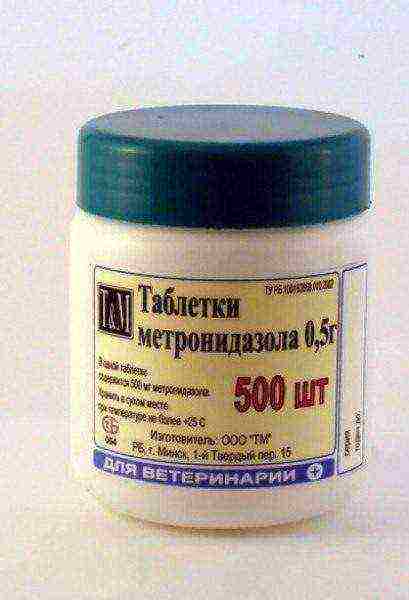
After taking, the drug is absorbed very quickly from the digestive system and is distributed in the tissues and organs of the bird. Metronidazole has the ability to penetrate from the circulatory system into the nervous system and accumulate in the liver. It is excreted from the body within 2 days with urine and feces.
How to use an antibiotic for different types of poultry, instructions
Broiler chickens
When raising broiler chickens this antibiotic can be used both for prophylaxis and directly for treating coccidiosis or histomoniasis... These diseases affect the digestive system of young animals in the first days of life and cause focal inflammation, which without appropriate treatment will lead to complete liver damage. As a result, the cost of feeding increases or there is a partial or complete death of the livestock.
Symptoms of coccidiosis:
- Strongly decreased appetite.
- Young animals are very drinks a lot.
- Chicks are inactive, huddle in heaps.
- The bird tries to position itself as much as possible closer to heat sources.
- Chicks sit ruffled and ruffled plumage.
- Present bloody diarrhea.
- Sometimes it can be observed complete or partial paralysis.
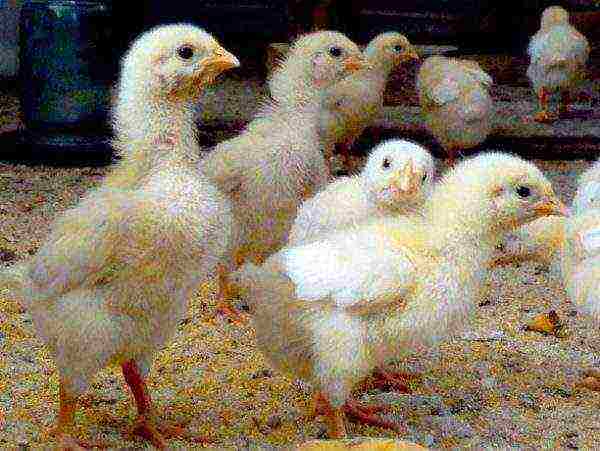
Preventive treatment of young broilers carried out every 2 weeks up to the age of 1.5 months. The drug is put into feed at a dose of 20-25 mg per kg of live weight of a bird for 5 days. Adding powder to water is not advisable and ineffective, since it practically does not dissolve in it and settles at the bottom of the drinkers.
Turkey poults
When growing turkey poults metronidazole is used as a prophylactic and therapeutic agent for the treatment of such a dangerous disease as histomoniasis. Young animals are susceptible to this ailment, starting from 2 weeks of age. After infection, the bird begins to develop inflammation in the liver and cecum, which, without appropriate treatment, progress and further lead to severe exhaustion and death.
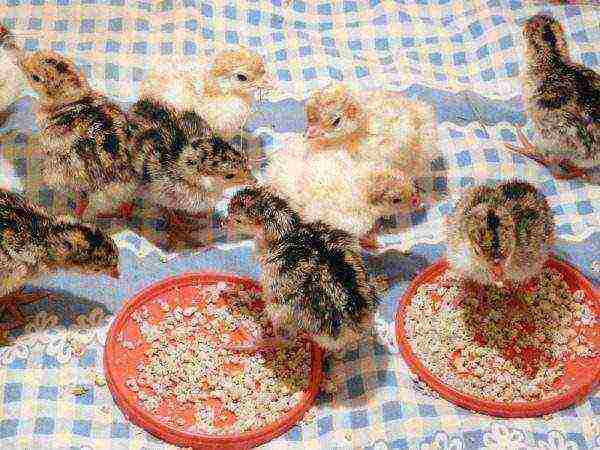
The main symptoms of histomonosis:
- Decreased appetite, and in severe cases it may be completely absent.
- The bird is depressed sedentary.
- Wings downand the plumage is dirty and disheveled.
- Observed frothy diarrhea bright yellow.
- Sometimes observed blue skin on the head, for which the disease received the second name "black head".
The drug can be given to turkey poults, both for prophylaxis and directly for treatment. The dosage in these cases will vary. For prevention powder from metronidazole tablets is added to feed at the rate of 20 mg per kg of live weight of the bird for 3-5 days. Therapeutic dose for turkeys it will be more, and will be 25 mg per kg of body weight, it will be necessary to give it within a week.
Goose
When growing goslings metronidazole is used both as a prophylactic agent and directly for the treatment of diseases. For example, such as trichomoniasis or histomoniasis. These diseases are characterized by severe lesions of the digestive and respiratory systemswhich ultimately lead to death from exhaustion or suffocation.

The main symptoms of trichomonasis:
- In a sick bird in the throat you can see yellowish bloom.
- Increased temperature.
- Goose refuse to eat, the general condition is depressed.
- Present diarrhea yellowish gray with a fetid odor.
- Goiter increases.
- Observed labored breathingaccompanied by discharge from the nose and eyes.
The illness can last up to 2 weeks. The death of goslings from it can reach 90%. For the treatment of sick birds the drug is added to the feed at the rate of 25 mg per kg of body weight for 10 days.
Other birds
Metronidazole can also be used to treat pigeons, quails, or guinea fowls. Dose of the drug in this case, it will be 20 mg per kg of body weight.
How to give for the treatment of an adult bird: ducks, geese and turkeys
In the process of raising poultry, it is often necessary to treat an adult livestock. This is especially necessary for aquatic species such as geese or ducks. Also, metronidazole is very often used to treat adult turkeys.

The dose of the drug during treatment is 1.5 g of active ingredient per kilogram of feed. It must be given for 10 days.
Such treatment, carried out for the purpose of prevention or treatment, in the future allows you to get strong and healthy offspring from the broodstock.
Side effects
If use metronidazole according to the instructions, do not exceed the recommended dosage and terms of use, then the risk of unwanted side effects is minimized... Very rarely, when using the drug, allergic reactions may occur. In this case, you must stop taking and contact your veterinarian, who will select other means with a similar effect.
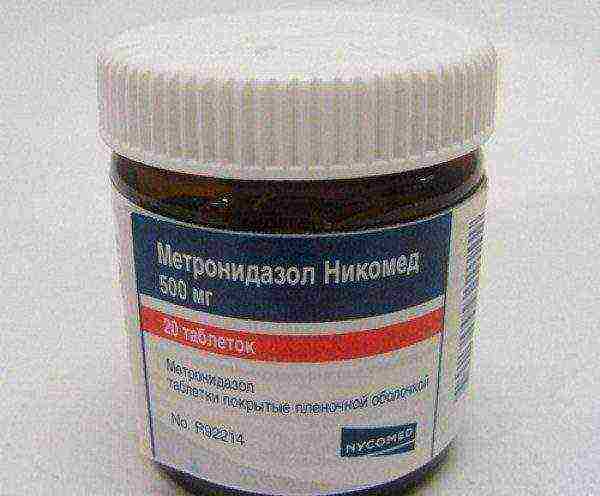
Contraindications for use
Contraindication to taking the drug there can be only hypersensitivity to the active substance, which is extremely rare.
Pharmacological properties
Metronidazole has a detrimental effect on most of the simplest parasites: Trichomonas, histomonads, amoebas and a number of others. It is also effective against common anaerobic bacteria. After taking it, it enters the digestive system, from where it spreads very quickly to all tissues of the organs. It also has the ability to accumulate in the liver.
Release form, dosage
Metronidazole is produced in tablet form with a mass of 0.5 grams.The content of the active substance in them can be 0.25 or 0.125 g. Tablets can be packed in plastic jars or cardboard boxes of 250 or 1000 pieces.
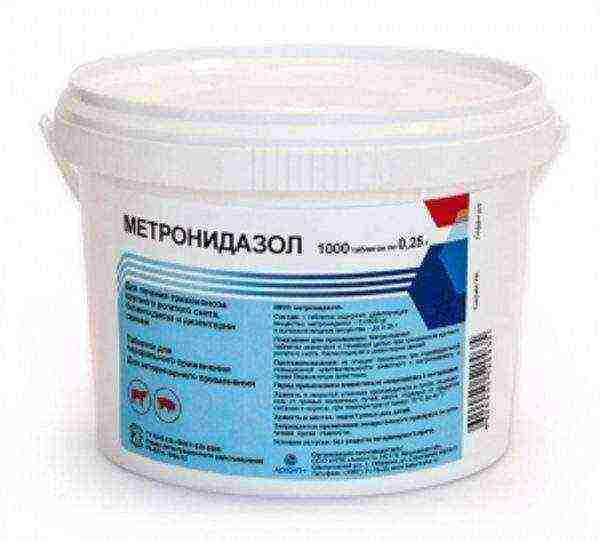
Metronidazole is a drug, so it is advisable to consult a veterinarian before using it. He can exactly diagnose a sick bird, choose the correct dose of the drug and determine the duration of treatment.

